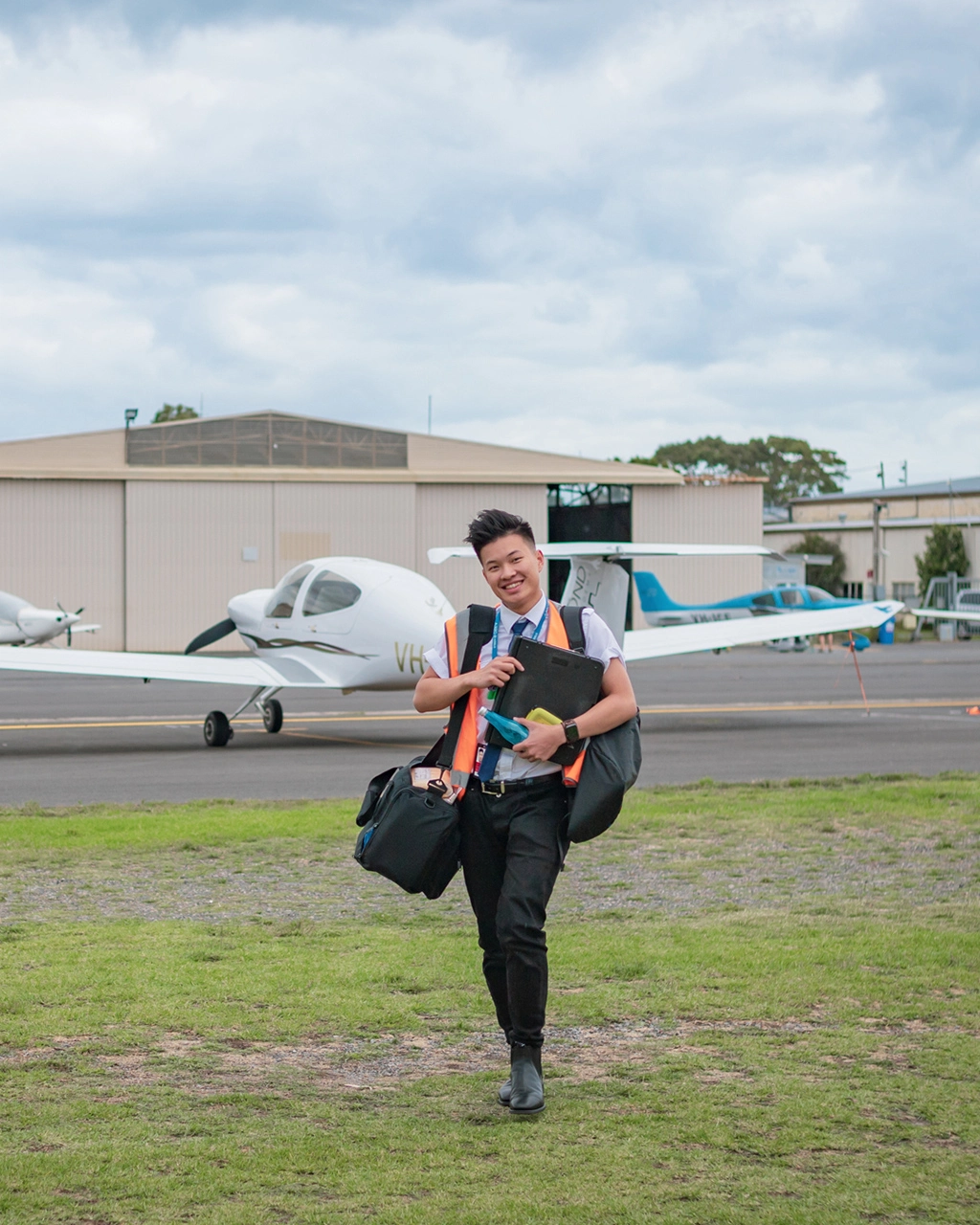
July 17, 2024
The day-to-day life of a commercial pilot
For aspiring pilots and flight school students, understanding the day-to-day responsibilities and professional demands of a commercial pilot is essential in shaping their career aspirations.
The daily life of commercial pilots can vary between those who fly domestically versus internationally but exploring the skills required for success in this career and the ongoing professional development necessary to excel in the aviation industry is important for any aspiring pilot.
Overview of commercial piloting
Commercial pilots operate aircraft to transport passengers and cargo safely and efficiently.
Their responsibilities extend beyond flying to encompass pre-flight planning, aircraft maintenance checks, crew coordination, and adherence to stringent safety protocols. The career path to becoming a commercial pilot typically involves rigorous training and certification, such as obtaining a commercial pilot licence in Australia, often pursued through programs offered by flight schools.
Day-to-day responsibilities
Domestic pilots
Pre-Flight Preparation: A typical day for a domestic commercial pilot begins with thorough pre-flight planning. This involves reviewing weather conditions, flight plans, and fuel requirements. Pilots also conduct pre-flight inspections of the aircraft to ensure it is airworthy.
Flight Operations: Once airborne, domestic pilots focus on executing flight plans, navigating airspace, and communicating with air traffic control (ATC) for guidance and updates. They prioritise passenger safety and comfort while adhering to strict operational procedures.
Airport Operations: At destination airports, pilots oversee aircraft parking, passenger disembarkation, and post-flight inspections. They may also interact with ground crew and airline staff to coordinate turnaround activities for the next flight.
Regulatory Compliance: Throughout the day, pilots must comply with aviation regulations and company policies to maintain safety standards and operational efficiency.
International Pilots
Global Operations: International commercial pilots face additional complexities due to varying airspace regulations, customs procedures, and cultural considerations in different countries. They must meticulously plan routes, obtain required clearances, and manage longer flight durations and time zone differences.
Cross-Cultural Communication: International pilots interact with diverse crews, passengers, and ATC personnel, necessitating effective communication skills and cultural awareness.
Security Protocols: Pilots flying internationally must adhere to stringent security protocols at airports worldwide, ensuring the safety of passengers, crew, and aircraft.
Skills used by commercial pilots
Technical Proficiency
Commercial pilots require advanced technical skills to operate complex aircraft systems and navigate various weather conditions and airspace environments safely. They must interpret flight data, monitor aircraft performance, and make real-time decisions to ensure smooth and efficient flights.
Decision-Making and Problem-Solving
Quick and effective decision-making is crucial for pilots, especially in emergencies or when facing unexpected weather or mechanical issues. They use analytical skills to assess risks, evaluate options, and prioritise actions that uphold safety and operational integrity.
Communication and Leadership
Clear and concise communication is essential for pilots to convey instructions to crew members, interact with ATC, and provide reassuring information to passengers. Leadership skills enable pilots to maintain calm and professionalism under pressure, fostering a positive and secure flight environment.
Situational Awareness
Commercial pilots maintain high levels of situational awareness, continuously assessing surroundings, monitoring aircraft systems, and anticipating potential challenges. This keen awareness allows them to pre-emptively address issues and maintain operational efficiency.
Continued professional development
Training and Certification
Continued professional development is integral to the career progression of commercial pilots. They undergo recurrent training and proficiency checks to maintain their commercial pilot licence in Australia or other regulatory certifications. This training covers new aviation technologies, updated safety protocols, and regulatory changes.
Career Advancement
As pilots gain experience, they may pursue opportunities for career advancement, such as upgrading to larger aircraft types, transitioning to managerial roles within airlines, or specialising in specific aviation sectors like cargo or corporate aviation.
Industry Knowledge and Networking
Staying abreast of industry trends, regulatory updates, and technological advancements is crucial for pilots. Engaging in professional organisations, attending industry conferences, and networking with peers and aviation experts enhance their knowledge base and career prospects.
Health and Wellbeing
Maintaining physical health and mental well-being is vital for pilots, as the job demands long hours, irregular schedules, and exposure to environmental stressors. Airlines prioritise pilot wellness through fitness programs, fatigue management strategies, and mental health support services.
The day-to-day life of a commercial pilot is challenging, and rewarding, offering unparalleled opportunities for those passionate about aviation. Whether flying domestically or internationally, pilots uphold high standards of safety, professionalism, and operational efficiency. Developing and honing technical, decision-making, and communication skills are essential for success in this demanding career.
Aspiring pilots and flight school students aspiring to pursue a serious career in aviation, including through a Diploma in aviation in Australia, should consider the diverse responsibilities and ongoing professional development required to excel as commercial pilots.








